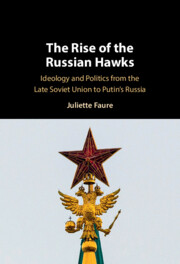Refine search
Actions for selected content:
379 results
12 - Joyce and the Everyday
-
-
- Book:
- The Cambridge Companion to James Joyce
- Published online:
- 14 August 2025
- Print publication:
- 21 August 2025, pp 200-215
-
- Chapter
- Export citation
Chapter 1 - An Introduction Is Like a Book
-
- Book:
- How the World Became a Book in Shakespeare's England
- Published online:
- 09 August 2025
- Print publication:
- 14 August 2025, pp 1-31
-
- Chapter
- Export citation

How the World Became a Book in Shakespeare's England
-
- Published online:
- 09 August 2025
- Print publication:
- 14 August 2025
Colonizing Spatiality: The Western Civilizing Mission, Heating Technology, and Getting Iranians, Literally, Off the Ground
-
- Journal:
- Iranian Studies ,
- Published online by Cambridge University Press:
- 07 August 2025, pp. 1-27
-
- Article
-
- You have access
- Open access
- HTML
- Export citation
Against American Ethnic Democracy: White Rule and Black Rebellion
-
- Journal:
- Perspectives on Politics , First View
- Published online by Cambridge University Press:
- 07 August 2025, pp. 1-18
-
- Article
-
- You have access
- Open access
- HTML
- Export citation
Theophilos and the Generation of the Thirties (again)
-
- Journal:
- Byzantine and Modern Greek Studies , First View
- Published online by Cambridge University Press:
- 01 August 2025, pp. 1-14
-
- Article
-
- You have access
- Open access
- HTML
- Export citation
15 - Scope and Depth of International Legitimacy, Modernity, and the West
- from Part V - International Legitimacy and Change
-
- Book:
- The Law and Politics of International Legitimacy
- Published online:
- 14 July 2025
- Print publication:
- 24 July 2025, pp 283-300
-
- Chapter
- Export citation
Chapter 13 - Pierre Boulez and His Contemporaries
- from Part III - Engagements with the Post-War Generation of Composers
-
-
- Book:
- Boulez in Context
- Published online:
- 08 July 2025
- Print publication:
- 24 July 2025, pp 125-136
-
- Chapter
- Export citation
Chapter 6 - The Conjuncture of Modernity
- from Part II - Musical Modernism
-
-
- Book:
- Boulez in Context
- Published online:
- 08 July 2025
- Print publication:
- 24 July 2025, pp 59-68
-
- Chapter
- Export citation
Introduction
-
- Book:
- Vico and the Maker's Knowledge Tradition
- Published online:
- 27 June 2025
- Print publication:
- 17 July 2025, pp 1-24
-
- Chapter
- Export citation
12 - The Rite of Spring in Popular Culture and Cinema
- from Part III - Performance and Interpretation
-
-
- Book:
- The Cambridge Companion to <i>The Rite of Spring</i>
- Published online:
- 28 June 2025
- Print publication:
- 17 July 2025, pp 236-254
-
- Chapter
- Export citation
6 - The Holocaust and Modernity
-
-
- Book:
- The Cambridge History of the Holocaust
- Published online:
- 16 May 2025
- Print publication:
- 12 June 2025, pp 113-133
-
- Chapter
- Export citation

The Rise of the Russian Hawks
- Ideology and Politics from the Late Soviet Union to Putin's Russia
-
- Published online:
- 11 June 2025
- Print publication:
- 29 May 2025
2 - Reenchanting Soviet Modernity (1960–1985)
-
- Book:
- The Rise of the Russian Hawks
- Published online:
- 11 June 2025
- Print publication:
- 29 May 2025, pp 28-60
-
- Chapter
- Export citation
1 - Introduction
-
- Book:
- The Rise of the Russian Hawks
- Published online:
- 11 June 2025
- Print publication:
- 29 May 2025, pp 1-27
-
- Chapter
- Export citation
9 - Conclusion
-
- Book:
- The Rise of the Russian Hawks
- Published online:
- 11 June 2025
- Print publication:
- 29 May 2025, pp 291-299
-
- Chapter
- Export citation
Chapter 16 - Islands, Oceans, and the Production of Spatial Theory
- from Part III - Applications and Extensions
-
-
- Book:
- Space and Literary Studies
- Published online:
- 07 May 2025
- Print publication:
- 22 May 2025, pp 269-287
-
- Chapter
- Export citation
VI - The Next Stage
-
- Book:
- Tolkien and the Mystery of Literary Creation
- Published online:
- 17 April 2025
- Print publication:
- 08 May 2025, pp 319-377
-
- Chapter
- Export citation
Chapter 4 - Anthropologies of the Mechanical Arts
-
- Book:
- Satire, Instruction and Useful Knowledge in Eighteenth-Century Britain
- Published online:
- 24 April 2025
- Print publication:
- 08 May 2025, pp 84-108
-
- Chapter
-
- You have access
- Open access
- Export citation
Life-world: Beyond Fukushima and Minamata
-
- Journal:
- Asia-Pacific Journal / Volume 10 / Issue 42 / October 2012
- Published online by Cambridge University Press:
- 07 May 2025, e2
-
- Article
-
- You have access
- Open access
- Export citation
